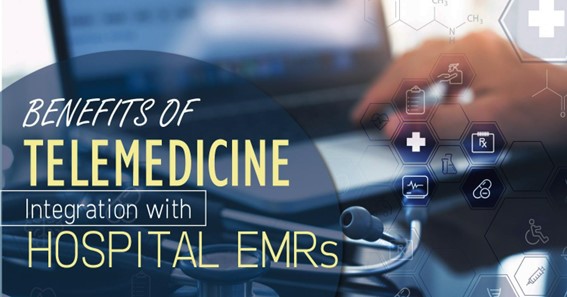Changes occur from time to time in every sector. No practice is permanent. Every practice changes with time. People like to see changes to make it easier, simple, more comfortable, or more understandable. We have seen how medical practices changed over many years. For example- People had to go to a hospital or medical clinic to get an appointment with a doctor for their treatment. But now, people can get an appointment with a doctor with just a click from their phone. For this, you don’t even go to hospitals or clinics. You can get the appointment from anywhere as per your comfort. Why do these changes happen in the medical sector?
Because health systems and other providers have adjusted to meet this need as consumers increasingly place a higher value on comfortability than on quality and price. There are so many changes happening in the medical sector, such as the Electronic Medical Record, the central repository for medical data preservation, care coordination, and progress monitoring, which governs workflow for the vast majority of healthcare professionals.
In this blog, we will discuss the benefits of telemedicine integration with hospital EMRs. Before that, we will discuss what EMRs are, their benefits, etc.
What is EMR?
Doctors store patient health information in an EMR, which is electronic data. Healthcare facilities, large and small, can use EMR systems’ interfaces and a wide range of features. They are utilized for managing payments, scheduling patient appointments, adding new patients, sharing information, and logging patient health information in addition to processing insurance claims. Additionally, they enabled clinics to adapt to ICD-10, HIPAA 5010, and meaningful use criteria in terms of financing and legal requirements.
Generally, they consist of a person’s medical background, doctor’s observations, allergies, lab results, diagnosis, prescriptions, and dates of immunization. For therapy and diagnosis, online records of common clinical and medical data from a provider’s office are used. A patient’s medical history should be accurately recorded to help prevent incorrect diagnoses and to help deliver the right therapy.
When doctors started noting patient health issues rather than just their treatments, the development of EMR got underway in the 1960s. This procedure makes it easy for other providers to validate the diagnosis. Digitally storing and documenting health history grew crucial as computers and the internet gained popularity.
click here – VanceAI Image Upscaler Help Design High-quality Posters
Let’s see some benefits of EMR.
Benefits of EMR
EMR is beneficial for both patients and providers.
For patients
The followings are some benefits of EMR for patients-
- If you compare it with paper records, you will find that digital records come with a few mistakes.
- EMR has more safer and rapid care than traditional care.
- Analyze historical data and outcomes.
- Improve the diagnosis and therapy.
- Determine which people need to be screened and receive preventative treatment.
- It provides better health security and privacy to a patient.
- It enables data-driven decisions.
- You will get follow-up support in the form of reminders, site links, and self-care advice.
- Patients can read their medicines, examine their information, and implement suggested lifestyle modifications.
click here – A guide to algorithmic trading options in the UK
For doctors
The followings are some benefits of EMR for doctors-
- Paper records of different patients occupy many spaces in hospitals, and maintaining and storing these records is very hard. But in EMRs, you don’t have to do these things.
- EMR aid in streamlining processes, monitoring patients, and managing patients who enter a medical facility.
- By consolidating records, they lower operating expenses.
- Clinics can communicate with hospitals, pharmacies, laboratories, and state and federal health systems with the help of EMR.
- It aids in scaling and customizing patient records.
- Clinics are able to collect and evaluate patient data. By enabling providers to contact specific populations, overall health is improved.
- Digitally preserving patient records helps research and allows for patient monitoring to improve the standard of care.
- Physicians might have to request repeat tests if they don’t get access to test results quickly. Repeat tests are less frequently required when doctors are informed of past results. When tests are expensive, painful, or intrusive, it is especially crucial.
- Public health registries, including those for communicable diseases, can be accessed through EMR.
Now, it’s time to see the benefits of telemedicine integration with EMRs.
-
EMR Integration and Telehealth
When health systems weigh the pros and cons of implementing telehealth technology, they consider whether it would simplify or complicate the process of providing treatment. Because it boosts provider productivity and raises treatment quality, EMR integration is a particularly helpful part of the telehealthcare delivery strategy. It increases provider productivity while enabling them to make judgments based on evidence, promoting quicker diagnosis, reducing prescribing errors, and ultimately increasing patient outcomes. Telehealth and patient data are connected through EMR integration.
Records and procedures are duplicated as little as possible using a telehealth solution that is integrated with an EMR. The EMR will be integrated whenever a virtual visit takes place or biometric data is gathered on the telehealth platform, facilitating record-keeping and guaranteeing that all patient data is gathered in one location. As a result of the improved workflow, doctors may see more patients throughout the day without having to overbook their office visits, which boosts income for the business.
-
Using Telehealth to Improve Data Collection
From the viewpoint of reporting and analytics, EMR integrations can be quite helpful, particularly for Medicaid and Medicare as well as monitoring and invoicing reconciliations for all commercial payers. Reporting is crucial because of the recent modifications made by the CMS to allow for remote patient monitoring, virtual check-ins, and online consultations. Now that telehealth encounters are eligible for reimbursement, there is a huge opportunity for providers across the country. However, this opportunity also increases the need for efficiency and precise reporting. Organizations are assisted in meeting this requirement via bidirectional interfaces between the EMR and telehealth platform.
-
EMRs’ Impact on Telehealth
Delivering comprehensive and effective care is made possible by an EMR integration with an organization’s telehealth system, which also streamlines provider processes and cuts down on duplication. Effective integration will make patient care more accessible, improve health satisfaction, and enhance the technological experience for healthcare providers throughout the system.
Conclusion
In this blog, we have discussed the benefits of telemedicine integration with EMRs. We have also discussed what EMR is and its benefits. We hope that the blog will be useful for you.






